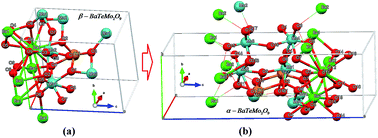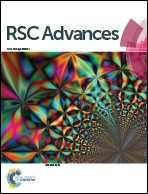Abstract
The second harmonic generation (SHG) and the first hyperpolarizability (βijk) of β-BaTeMo2O9 and α-BaTeMo2O9 phases have been calculated. Due to structure arrangement and hence the orientation of the dipole moments, β-phase exhibit larger SHG than that of α-phase although it produces high local SHG. The linear optical properties reveals that α-phase show larger anisotropy between the optical components along the polarization directions [100], [101] and [001] than that of β-phase. The anisotropy in the linear optical susceptibilities favors an enhanced phase matching conditions necessary for observation of SHG and optical parametric oscillation (OPO). It has been found that these materials exhibit positive uniaxial anisotropy and positive birefringence. We found that α-phase show higher uniaxial anisotropy and birefringence values than those of β-phase. The calculated SHG reveals that χ(2)222(ω) is the dominant tensor compound for β-phase with d22 of about 20.46 pm V−1 which is higher than the experimental value of the well known KTiOPO4 (KTP) single crystals. While χ(2)322(ω) is the dominant tensor compound of α-phase with d32 of about 0.11 pm V−1. In addition, we have calculated the microscopic first hyperpolarizability, βijk, the vector components along the dipole moment direction for the dominant components of β-BaTeMo2O9 and α-BaTeMo2O9 phases at static limit and at λ = 1064 nm.


 Please wait while we load your content...
Please wait while we load your content...